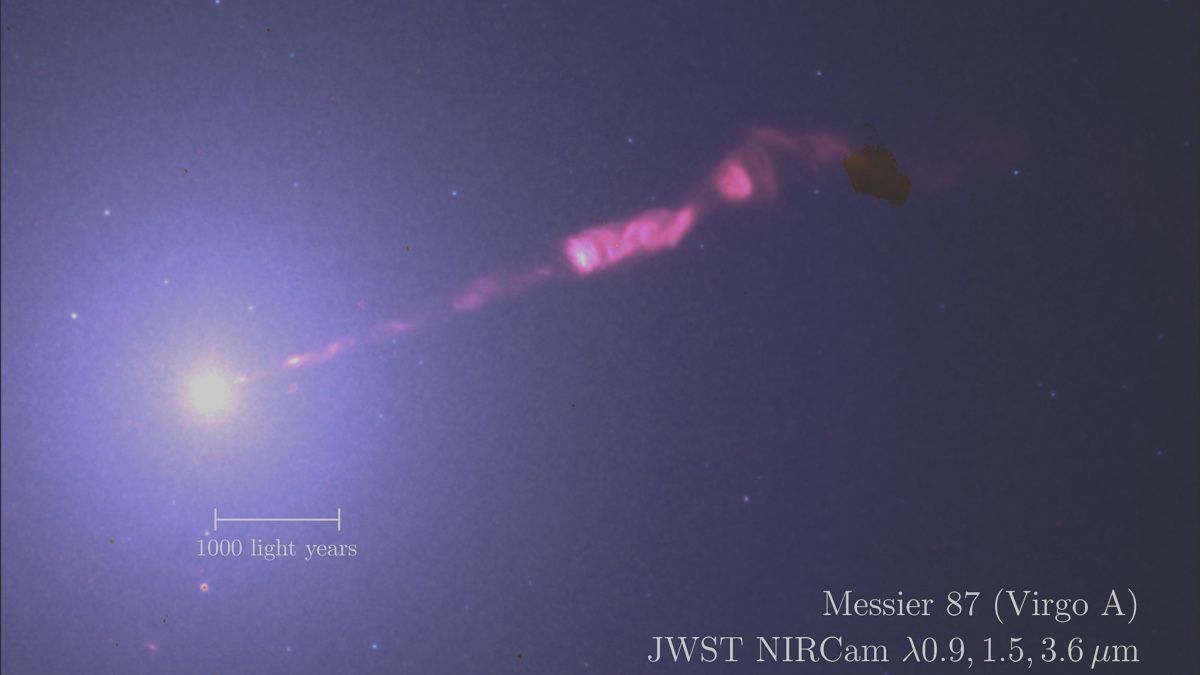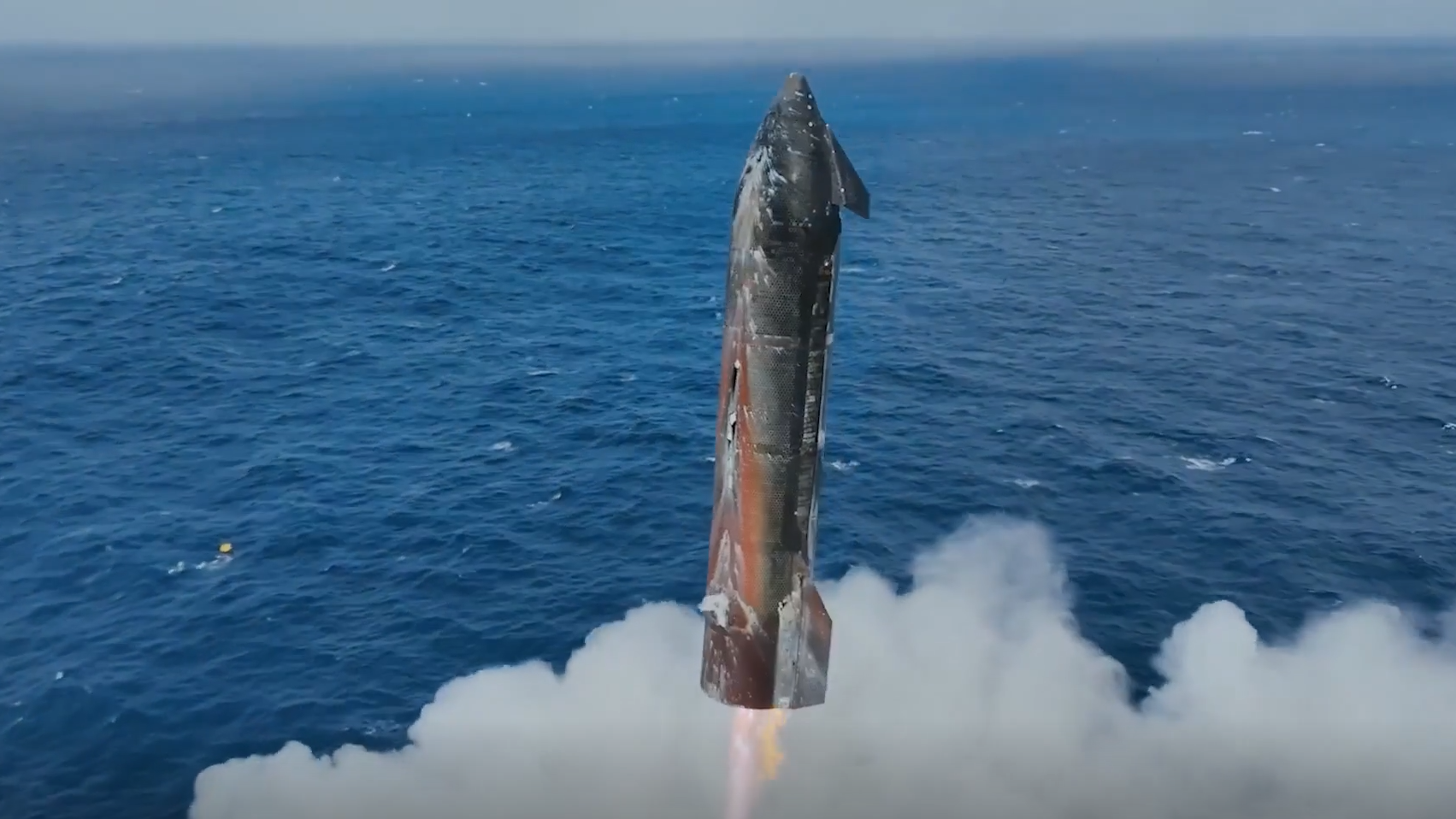New images from the James Webb telescope have captured previously unseen details of the gargantuan jets shooting out of the famous black hole M87* — the first-ever black hole to be directly imaged by the Event Horizon Telescope.
The new James Webb Space Telescope (JWST) images, published Sept. 22 in the journal Astronomy & Astrophysics, have also revealed the clearest views yet of the massive counter-jet that’s ricocheting through space in the opposite direction, the study authors found.
Although supermassive black hole jets are somewhat common, “the M87 jet is special in the sense that it is fairly close by (on astronomical scales), and very bright across the spectrum,” study co-author Jan Röder, an astrophysicist at the Institute of Astrophysics of Andalusia in Spain, told Live Science in an email. This makes it “an ideal laboratory to study jet physics,” he said.
The black hole M87* is a supermassive black hole with an equivalent mass of about 6.5 billion suns. It was the first black hole to be directly photographed by the Event Horizon Telescope — an array of eight globally linked radio telescopes — in 2019.
The black hole and its jets have been frequently studied since then, with recent research finding that the cosmic monster is spinning at close to 80% of the cosmic speed limit, and that the magnetic fields surrounding the black hole have changed dramatically in just a few short years.
Previous research has peeked at the jet using various electromagnetic wavelengths, including radio waves, visible light, ultraviolet radiation, X-rays and gamma rays. But its structure at the infrared scale, which Röder said is key for connecting the radio and visible light images, was unknown.
Now, Röder and his team have used infrared images of M87 taken in June 2024 by JWST’s Near Infrared Camera (NIRCam) to study the jet like never before. First, the team isolated the jet in the images by modelling the galaxy and then scrubbing away its light emissions; as well as any extra stars, dust and background galaxies. They then used these cleaned images to identify all the individual features of the jet at four wavelengths of infrared light.
The two shorter-wavelength images were particularly high definition, and captured one of the brightest sections of the jet, called HST-1, near the galaxy’s core. Previous research modelled HST-1 using X-ray data and found it was made up of two light emitting regions. These images are the first direct observations confirming this structure, Röder said.
The two longer-wavelength images show a faint C-shaped counter-jet spurting from the core in the opposite direction of the main jet. While the counter-jet also appears in radio wave photos, Röder said that the clarity achieved in the infrared images was “very exciting.”
Continuing to snap photos at different wavelengths will help scientists to understand how the jet interacts with its cosmic surroundings and what the jet and its opposite are made of. “With every new observation, we inch closer to the complete picture,” Röder added.
First Appeared on
Source link













